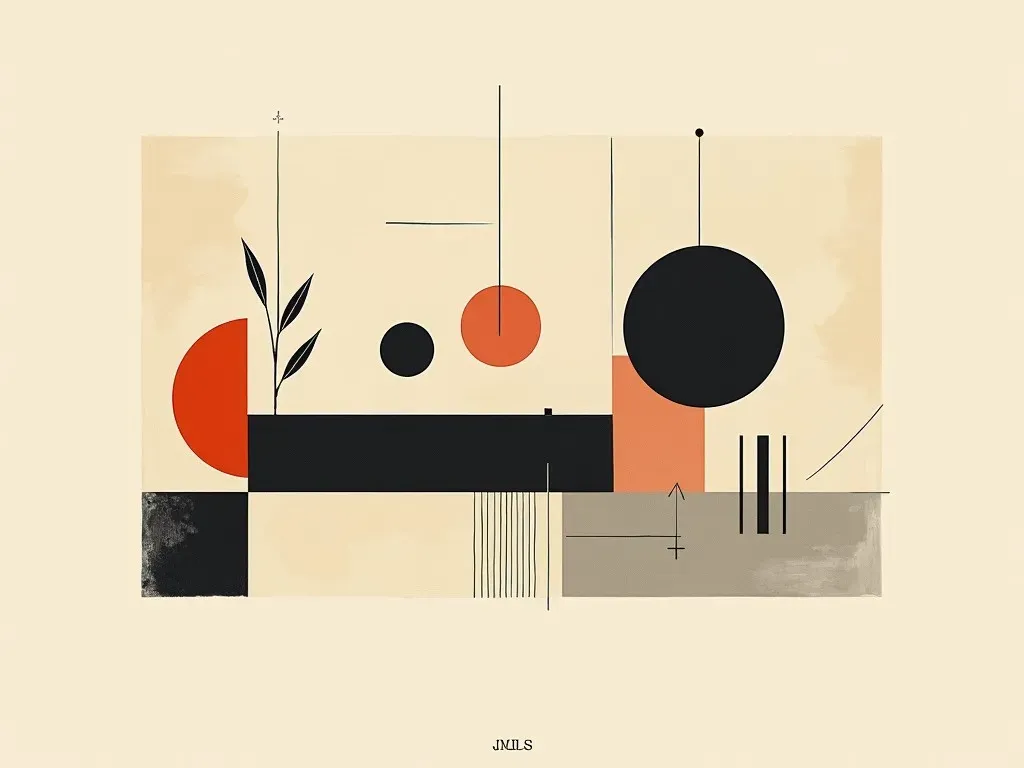Famous minimalist artwork often highlights simplicity and a reduction of form, creating a powerful visual experience that invites contemplation and interpretation. This unique genre emerged in the United States during the 1960s as a counter-movement to Abstract Expressionism, emphasizing a “less is more” philosophy. Artists sought to rid their works of emotional excess and complexity, instead presenting pieces that were stark, elegant, and devoid of unnecessary detail.
The minimalist movement is characterized by its focus on geometric shapes, clean lines, and primary colors. Some of the standout figures in this genre include Donald Judd, Agnes Martin, and Frank Stella. Let’s explore some of the most famous minimalist artworks that have made a lasting impact on the art world.
Iconic Minimalist Artworks
| Artwork | Artist | Year | Description |
|---|---|---|---|
| “Untitled” | Donald Judd | 1965 | An example of Judd’s box-like geometric sculptures. |
| “On a Clear Day” | Agnes Martin | 1966 | A serene painting of soft lines and delicate hues. |
| “Black Horizontal” | Frank Stella | 1969 | Features geometric forms that challenge traditional painting. |
| “One and Three Chairs” | Joseph Kosuth | 1965 | A conceptual piece exploring the nature of representation. |
| “Blue Monochrome” | Yves Klein | 1961 | A vibrant single-color canvas that defies conventional art norms. |
Notable Minimalist Artists
1. Donald Judd
One of the key figures of minimalism, Judd rejected traditional painting and sculpture to create dimensional, geometric works. His stack sculptures are renowned for their clean lines and symmetry, emphasizing the beauty of form over color.
2. Agnes Martin
Martin’s works are characterized by subtlety and tranquility. Utilizing soft colors and delicate lines, she invites viewers to explore simplicity on a deeper emotional level. Her paintings are often described as meditative.
3. Frank Stella
Stella was groundbreaking in his use of color and form within the minimalist movement. His works feature bold geometric shapes and dynamic compositions that challenge notions of pictorial space and structure.
4. Sol LeWitt
A key contributor to both minimal and conceptual art, LeWitt created artworks that emphasized the importance of ideas behind the art itself. His wall drawings and structures are based on simple instructions that can be executed in various forms.
5. Carl Andre
Andre is known for his floor sculptures made from simple materials, often arranged in geometric patterns. His minimalist approach emphasizes the experience of the viewer interacting with the space around the artwork.
Reference Video
Defining Characteristics of Minimalist Art
Minimalist artwork is defined by several key characteristics:
- Use of Geometric Forms: Shapes like squares, rectangles, and lines prevail, underscoring the emphasis on form over content.
- Limited Color Palette: Minimalism often relies on primary colors and monochromatic schemes to highlight form rather than vibrancy.
- Focus on Materials: The intrinsic qualities of the materials used are often highlighted, urging viewers to appreciate the physicality of the artwork.
- Elimination of Detail: Superfluous ornamentation is stripped away, leaving the essential elements that define the piece.
Minimalism Art Examples
- “The Lightning Field” by Walter De Maria – A land art installation featuring 400 stainless-steel poles arranged in a grid across a remote area.
- “Untitled (The Brown Table)” by Donald Judd – A work that exemplifies the use of space and form while challenging perceptions of traditional furniture.
- “Equivalent VIII” by Carl Andre – Featuring bricks arranged in a rectangle, this piece revolutionized the concept of sculpture.
Famous Minimalist Paintings
Minimalist paintings are often described as simplistic yet evocative. Here are a few significant works:
| Painting | Artist | Year | Overview |
|---|---|---|---|
| “No. 61 (Rust and Blue)” | Mark Rothko | 1957 | Rich color fields that create immersive experiences. |
| “Four Darks in Red” | Mark Rothko | 1958 | An exploration of emotion through the interplay of colors. |
| “Untitled (Black on Grey)” | Mark Rothko | 1969 | A meditation on darkness and abstraction. |
Minimalist Art and Architecture
Minimalism extends beyond the art canvas and into architecture and design. Renowned architects such as Tadao Ando and John Pawson incorporate minimalist principles, leading to spaces that reflect simplicity and functionality. These buildings often prioritize light, materials, and natural elements, creating harmonious environments.
FAQs About Famous Minimalist Artwork
What is the main purpose of minimalist art?
Minimalist art aims to distill the essence of an object, emotion, or concept by removing unnecessary elements. This allows the viewer to engage with the work on a deeper level.
How did minimalism influence modern art movements?
Minimalism paved the way for various contemporary art movements by challenging traditional artistic conventions and emphasizing concepts over representations. This has influenced artists across diverse genres.
Who are some contemporary minimalist artists?
Contemporary artists like Yayoi Kusama, known for her polka dot motifs, and Ellsworth Kelly, recognized for his bold color fields, continue to explore minimalist themes in their work.
What materials are commonly used in minimalist artwork?
Common materials include metal, glass, wood, and paint. Minimalist artists often choose materials that highlight the impact of form and space.
Minimalism offers a striking perspective on modern art, encouraging viewers to appreciate the profound beauty of simplicity. For more in-depth readings on famous minimalist artists, visit Art Lex’s website.
